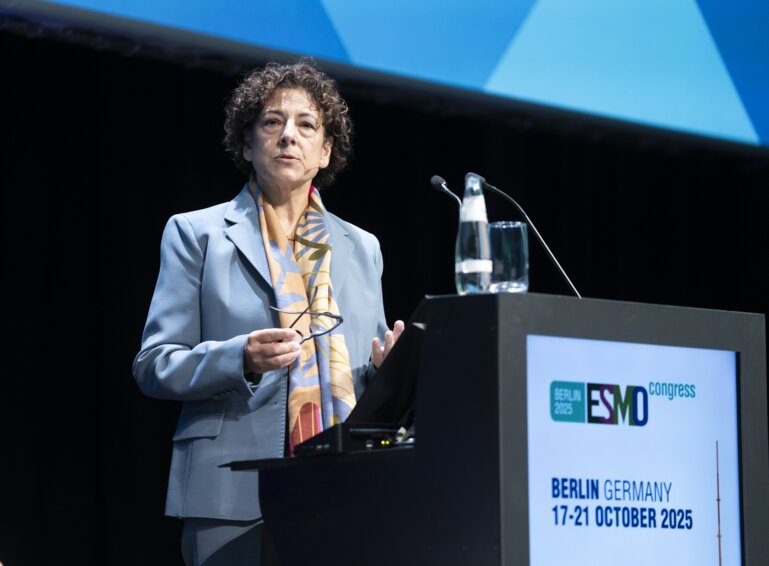Gene-expression assays have produced a huge step forward in identifying patients who are likely to benefit from adjuvant chemotherapy but there is still a long way to go in the more specific targeting of treatment
We have made considerable progress in the past 5 years in better understanding which patients with hormone receptor (HR)+/HER2− early breast cancer benefit most from adjuvant systemic treatment given after surgery. This is largely due to gene-expression assays that can help to guide the use of adjuvant chemotherapy, as demonstrated using a 21-gene recurrence-score assay in the TAILORx (N Engl J Med. 2018;379:111–121) and RxPonder (N Engl J Med. 2021;385:2336–2347) trials in node-negative and node-positive early breast cancers, respectively, or the 70-gene assay in node-negative and node-positive disease (N Engl J Med. 2016;375:717–729). Other assays may also have a role in directing the use of longer duration of endocrine therapy beyond 5 years or identifying individuals with ductal carcinoma in situ unlikely to benefit from radiotherapy after surgery. However, there are key areas where more research could help to further optimise the individualisation of treatment.
It would be ideal if we could identify those patients with HR+/HER2− breast cancer or even other breast cancer subtypes who do not require any adjuvant systemic therapy. Currently available gene-expression assays do not provide a high enough level of evidence to enable us to do this. We need to refine available tools or investigate alternative ways to identify these patients and spare them from unneeded treatment.
There is also an evolving story regarding the role of the Ki67 prognostic assay in guiding the use of anti-CKD4/6 directed therapy, especially in postmenopausal women who have a low genomic risk and high clinical risk. Although adjuvant chemotherapy does not improve outcomes for these patients, evidence from the monarchE study indicates that those with a Ki67 index of 20% or higher benefit most from adjuvant abemaciclib (Ann Oncol. 2021;32:1571–1581). The role of Ki67 in such treatment decisions is complicated by inconsistencies in the analytical validity and reproducibility of Ki67 testing across different laboratories. No benefit from adjuvant palbociclib has been demonstrated in the PALLAS (Lancet Oncol. 2021;22:212–222) and PENELOPE-B (J Clin Oncol. 2021;39:1518–1530) trials, while the NATALEE trial evaluating adjuvant ribociclib is ongoing (NCT03701334). Longer-term follow-up from the monarchE trial is needed to observe if the benefit of CDK4/6 inhibitors persists and also whether high Ki67 index is required to identify those most likely to benefit.
Another priority is to understand why a subset of younger women with a favourable genomic score and high-risk clinical features derive benefit from chemotherapy. Is it due to premature menopause induced by adjuvant chemotherapy, eradication of micrometastatic disease or do both factors contribute? Exploratory analyses from the RxPONDER trial have provided some insight into this question. Invasive disease-free survival was numerically greater in patients developing amenorrhoea within 2 years of initiating adjuvant therapy compared with those who did not, although this benefit was observed both in patients receiving chemoendocrine therapy and endocrine therapy alone. Additional prospective trials may be needed to determine whether ovarian function suppression plus an aromatase inhibitor may be an alternative to chemoendocrine therapy in premenopausal woman with a high clinical risk and low-genomic risk.
Finally, there is a need to determine the value of blood-based biomarkers, such as circulating tumour DNA (ctDNA) or circulating tumour cells, for the post-treatment monitoring of patients with localised breast cancers in order to identify those at the highest risk of recurrence. Such patients could potentially benefit from tailored adjuvant systemic therapies given before clinical evidence of metastasis, although additional research will be required to determine whether therapeutic intervention based on ctDNA monitoring prevents the development of metastasis and improves clinical outcomes.
Don't miss:
Optimising adjuvant treatment in HR+/HER2 negative early breast cancer. ESMO Breast Cancer 2022
Keynote Lecture, 03.05.2022, h. 15:40 – 16:10, Berlin Hall
Watch the session also on the Congress virtual platform.







